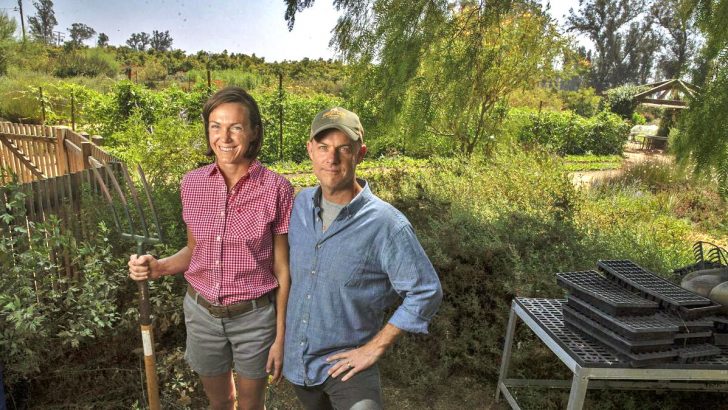The Biggest Little Farm (PG)
“They told us we were crazy,” says narrator John Chester of his ambition to create a farm with his wife Molly that would be totally in harmony with nature in this fascinating documentary set in Ventura County, “and they were right.”
It started with Todd. That’s their wide-eyed dog. His incessant barking in a tiny rented apartment in Los Angeles caused their landlord to issue them with a notice to quit.
Hence the “crazy” ambition. They wanted to give Todd somewhere nice to live so they decided to become farmers. Unfortunately, the area they chose was arid and manifestly unsuited to growth.
Six months later they’d used up their annual budget trying to make it so. They planted no less than 10,000 trees and 200 different crops. We’re not told where they got the money. Who are the mysterious investors?
It looked like a dream doomed to failure but somehow they made Apricot Lane Farm work. The film, with some stunning cinematography, follows their incredible efforts over seven years of innovative labour.
They faced enormous obstacles. First of all their mentor contracted an aggressive form of cancer. Then they were plagued by snails eating their crops. Coyotes even attacked their chickens. Added to which there were fires, floods and intense winds.
It wasn’t all doom and gloom. As their mentor advised them, everything evens out over time in the world of nature. Their ducks liked to eat snails. After digesting them, they acted as fertiliser for the land so they were doubly valuable.
Then they realised that the coyotes were doing them a favour by killing the gophers that were gnawing away at the roots of their trees. Enemies thus became unlikely friends. As John puts it, it was “a delicate dance of co-existence”.
Such co-existence is captured in a prettier form when a rooster (‘Mr Greasy’) bonds with Emma, their affectionate pig. They become “friends for life”.
David Attenborough would be proud of this film. The voiceover is a bit cheesy at times but there are powerful scenes that are photographed without any frills or sanitised editing, like when Emma gives birth to a dozen piglets. The close-ups are as good as anything in the National Geographic.
Humans play second fiddle to nature throughout but in the last quarter Molly has a baby. That completes the natural circle. The film’s overall lesson is that nature can be a good friend but a bad enemy.
In an age when most of us are aware that we’ve been pretty poor custodians of our planet over the generations, it serves as a timely reminder that with the right attitude we can reap huge rewards from the earth. We can alchemise its enigmatic miracles
The Biggest Little Farm is an eco-friendly film that aspires to cosmic dimensions in the last reel. It’s to be welcomed for its orientation. And savoured for its banquet of visual riches.


 Aubrey Malone
Aubrey Malone John Chester with his wife Molly
Photo Courtesy Of Farmlore Films
John Chester with his wife Molly
Photo Courtesy Of Farmlore Films 